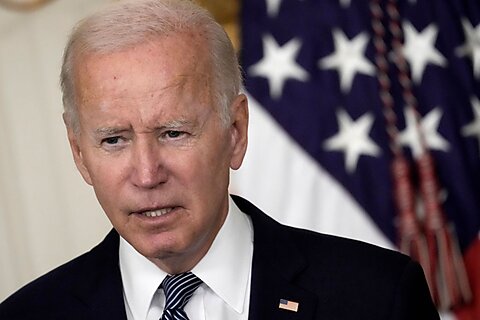
Romina Boccia and Dominik Lett
The Congressional Budget Office’s (CBO) latest 30‐year budget projections forecast rising debt, deficits, and interest costs, which will undermine US investment and economic growth and hurt American incomes. Rising spending on old‐age entitlement programs, primarily Medicare and Social Security, is mostly to blame. Legislators must act to achieve a sustainable budget policy and avert a future fiscal catastrophe.
CBO warns that “mounting debt would slow economic growth, push up interest payments to foreign holders of U.S. debt, and pose significant risks to the fiscal and economic outlook; it could also cause lawmakers to feel more constrained in their policy choices.” Lawmakers should heed CBO’s warnings and adopt a credible fiscal plan that will stabilize the debt. Annual spending is projected to grow from more than $6 trillion to $23 trillion (before adjusting for inflation) over the next 30 years. Without fiscal reforms, the government will accumulate $113 trillion in additional debt and end 2054 with debt at 166 percent of GDP. To avoid more painful and likely more chaotic austerity in the future, policymakers should correct course by restraining entitlement spending growth today.
Here are key highlights from CBO’s 30‐year forecast report:
Debt grows to 166 percent of GDP by 2054
As a percentage of the country’s yearly economic output, federal public debt (the debt borrowed from credit markets) is currently 99 percent of GDP—about $103,000 for every person in America. In just four years (2028), public debt is projected to surpass its all‐time World War II high of 106 percent. By 2034 (ten years from now), public debt will reach 116 percent of GDP. By 2054 (30 years from now), public debt is projected to reach 166 percent of GDP. Such high debt levels have never before been recorded in U.S. history.
Interest costs more than double to 6.3 percent of GDP by 2054
Between 2024 and 2054, interest costs are projected to grow from 3.1 percent to 6.3 percent of GDP. Interest costs grow faster than every other major budget category. By 2044, net interest payments will be larger than all discretionary spending combined. In other words, interest costs will exceed combined government spending on defense, education, transportation, agriculture, energy, and more. For these projections, CBO assumes an average 4.2 percent interest rate on 10‐year Treasury notes—the projected rate for 2024 is 4.6 percent. Were interest rates just one point higher than projected in 2054, interest costs that year would rise to 7.7 percent of GDP—an increase of $1.2 trillion for that year.
Entitlement spending drives unsustainable growth in federal debt
Between 2024 and 2054, total federal spending will increase from 23.1 percent to 27.3 percent of GDP. That’s nearly one‐third higher than the 50‐year historical spending average (21 percent of GDP), spanning 1974–2023. Major entitlements, like Social Security and Medicare, are almost entirely responsible for non‐interest spending growth. In 2024, Social Security’s and Medicare’s combined contribution to the deficit was 2.2 percent of GDP. By 2054, their annual deficit contribution will be 5 percent of GDP. That means spending on Social Security and Medicare will account for nearly 60 percent of the total deficit in 2054 (assuming additional borrowing past trust fund exhaustion and no other policy changes).
These projections are in line with findings from the latest Financial Report of the United States Government, which estimates that over the next 75 years, Medicare and Social Security funding shortfalls comprise 100 percent of the government’s total unfunded obligation (present value costs minus dedicated revenues).
Obvious solutions to restrain excess entitlement spending growth include reducing retirement and health care subsidies for wealthier individuals, adjusting eligibility ages for old‐age entitlements with improvements in health and life span, and preserving current benefits by adjusting for inflation while stopping excess benefit growth.
Social Security’s Old‐Age and Survivors Insurance (OASI) and Medicare’s Part A Hospital Insurance (HI) trust funds—which are more akin to financial ledgers than funds with real assets—are both projected to exhaust their borrowing authority within the next 10 years. Medicare’s HI trust fund will be depleted by 2035 (other estimates place the exhaustion date at 2031). For Social Security’s OASI, scheduled benefits can continue uninterrupted up to 2033. After borrowing authority is exhausted, Medicare and Social Security benefits would be indiscriminately cut by 11 and 23 percent, respectively, if Congress fails to act. Waiting until the 11th hour will leave legislators with few options to avoid steep benefit cuts and harmful tax increases.
CBO’s optimistic assumptions fail to capture the true extent of debt problem
It must be noted that the CBO projections are based on several unrealistic assumptions. For example, the agency projects substantial revenue increases once the 2017 Tax Cuts and Jobs Act provisions expire in 2025. Yet, as Cato’s Adam Michel writes: “There is broad bipartisan support to extend about three‐quarters of the tax cuts.” Moreover, CBO projects deficit cuts due to the discretionary spending caps established in the Fiscal Responsibility Act. In addition to assuming that lawmakers will stick to these spending limits, CBO does not consider various budgetary gimmicks agreed to outside this legislation. CBO also cannot predict the effects of potential future emergency spending bills, such as the pending supplemental Ukraine‐border security deal. Nevertheless, even with these overly optimistic projections, the federal debt is still expected to exceed historical highs within this decade.
Congress and the President must work together to stabilize spending and debt
More than $8 trillion in savings will be necessary to stabilize the debt over the next 10 years. Cato’s Chris Edwards suggests that significant entitlement reforms and a reduction in federal spending dedicated to state and local activities would address the debt problem. Reducing the growth of Medicare and Medicaid spending, adjusting Social Security benefit indexing, and cutting non‐Medicaid aid to states by half over ten years could stabilize the debt at 100 percent of GDP by 2033.
However, political considerations over entitlement changes and how these will play out electorally have delayed inevitable reforms for far too long. Americans in and near retirement age are the most active at the voting booth, and they also stand to be hurt the most should Congress allow indiscriminate benefit cuts to take place over the next 10 years.
Despite CBO’s concerning long‐term outlook, there are encouraging developments in the US fiscal landscape. The Fiscal Commission Act, which recently passed the House Budget Committee, aims to stabilize the debt over 15 years and address the insolvency of Medicare and Social Security’s trust funds. However, the current approach has certain shortcomings, such as including only elected officials as voting members on the commission and requiring an affirmative vote before proposals can go into effect.
The most promising approach would be a BRAC‐like fiscal commission to empower an independent body of experts to put forth policies to stabilize the federal debt. A well‐designed commission will be composed of independent experts with diverse viewpoints, who are tasked with a clear goal, such as stabilizing the public debt at no more than 100% of GDP over the next 10 years, and whose recommendations will be self‐executing in Congress through a similar fast‐track mechanism that allowed the Base Realignment and Closure (BRAC) commission to be successful. A BRAC process can overcome political gridlock by providing legislators with cover from delegating entitlement reform to outside experts.
If policymakers continue to put serious fiscal reform on the back burner, the severity and scope of necessary reforms will grow. High and rising debt causes a significant drag on the economy and threatens America’s fiscal and economic future. Delay is costly and risky. Congress and the President should act soon.



